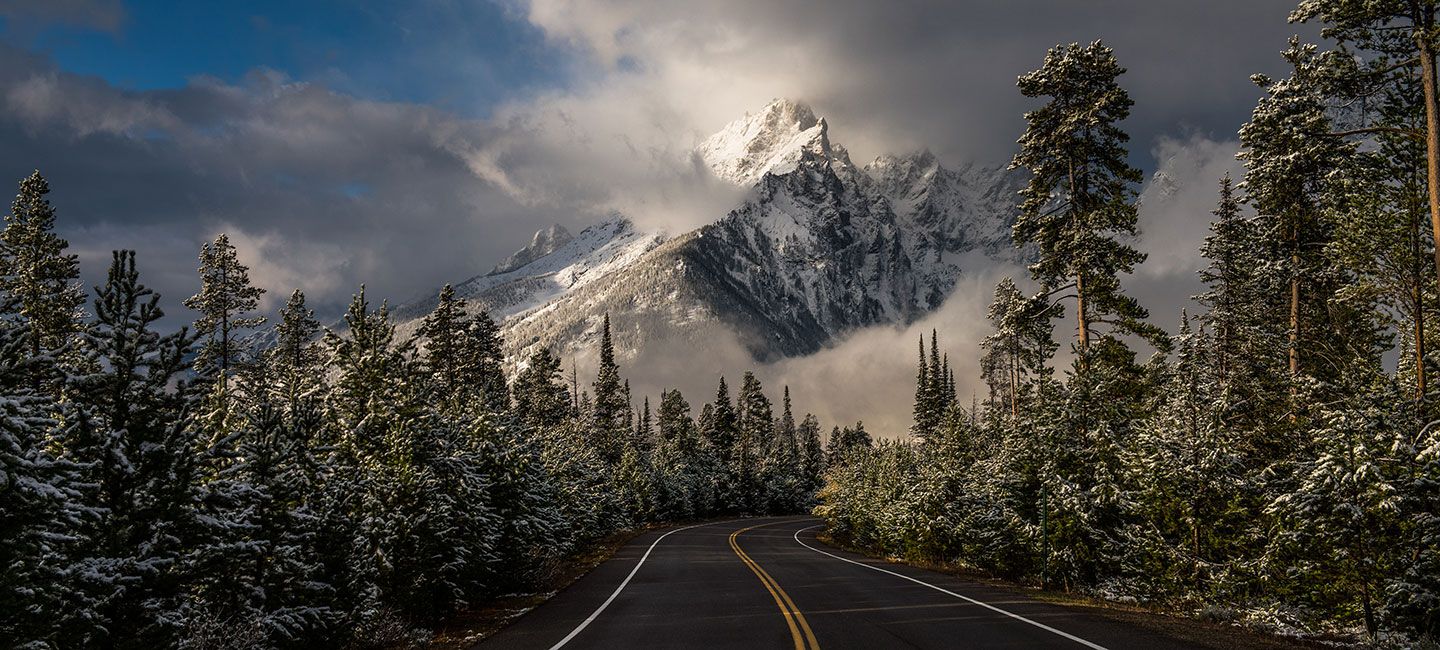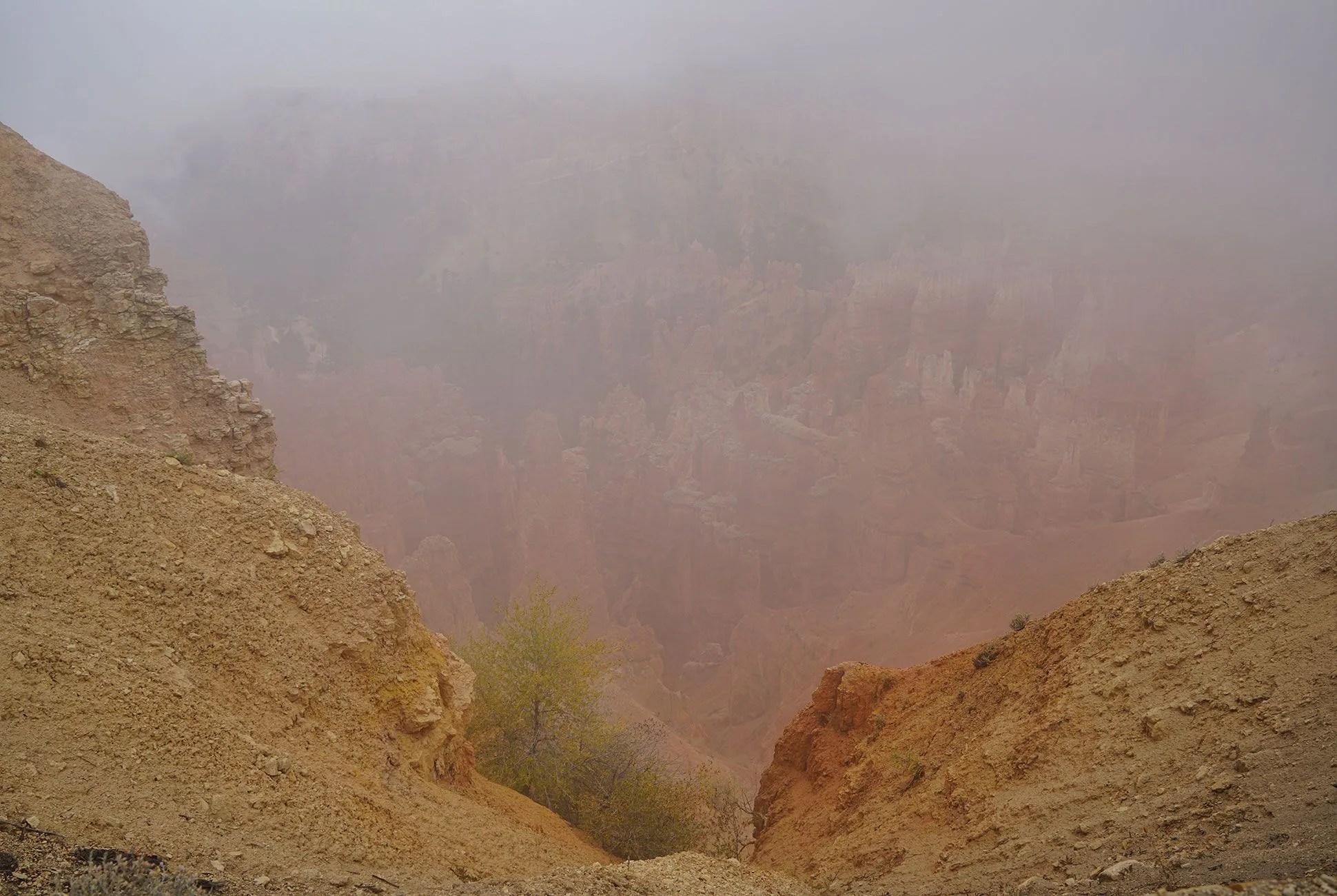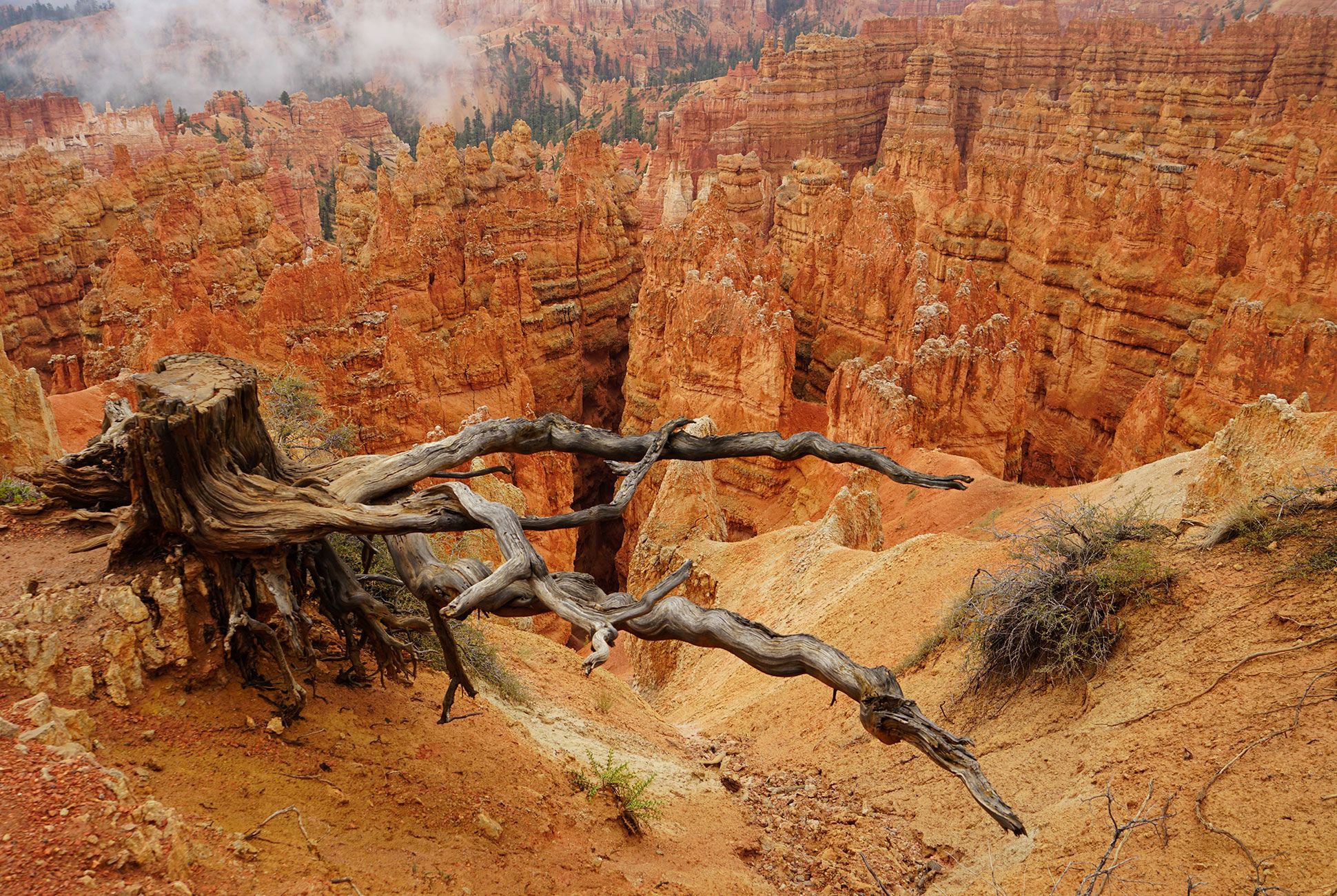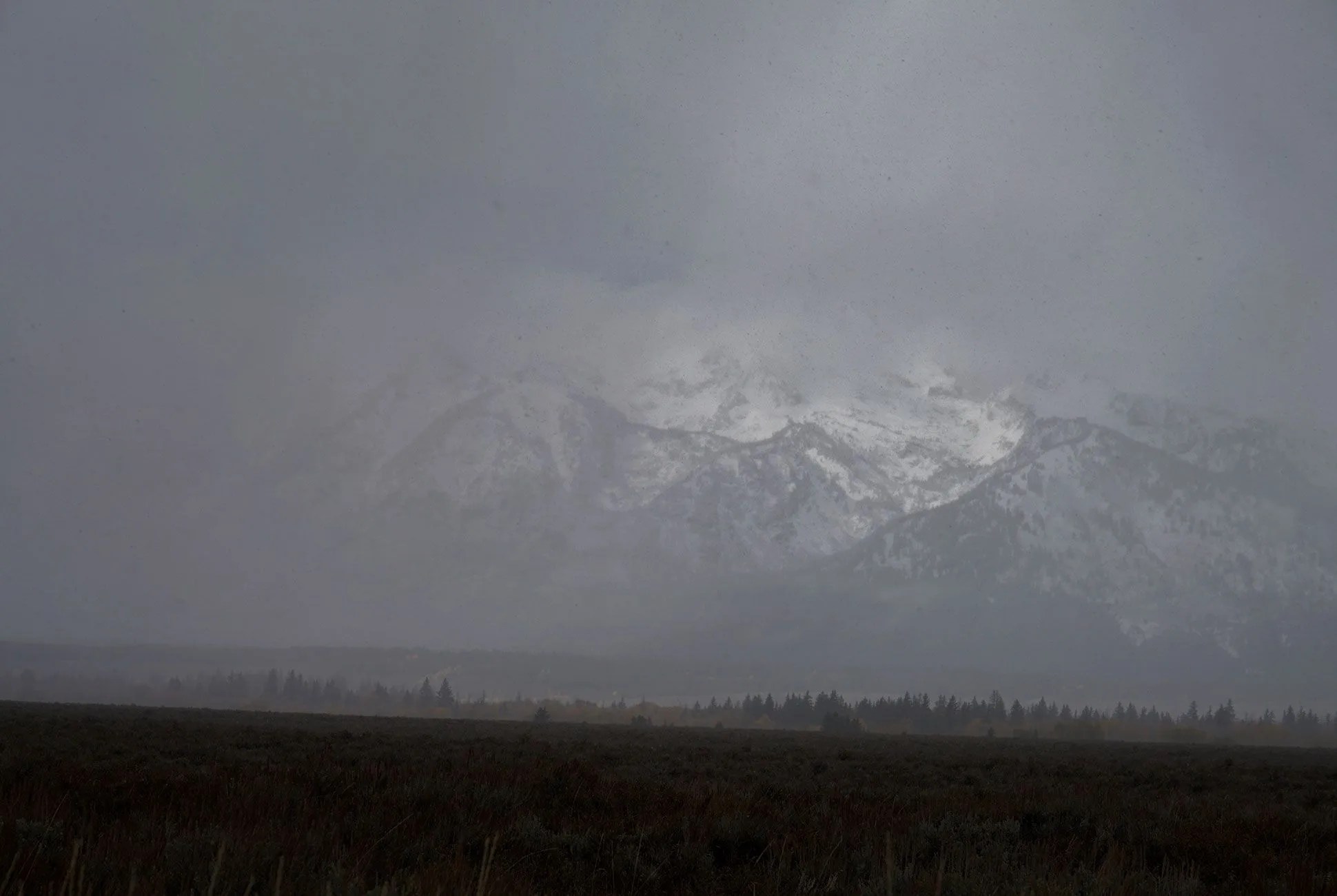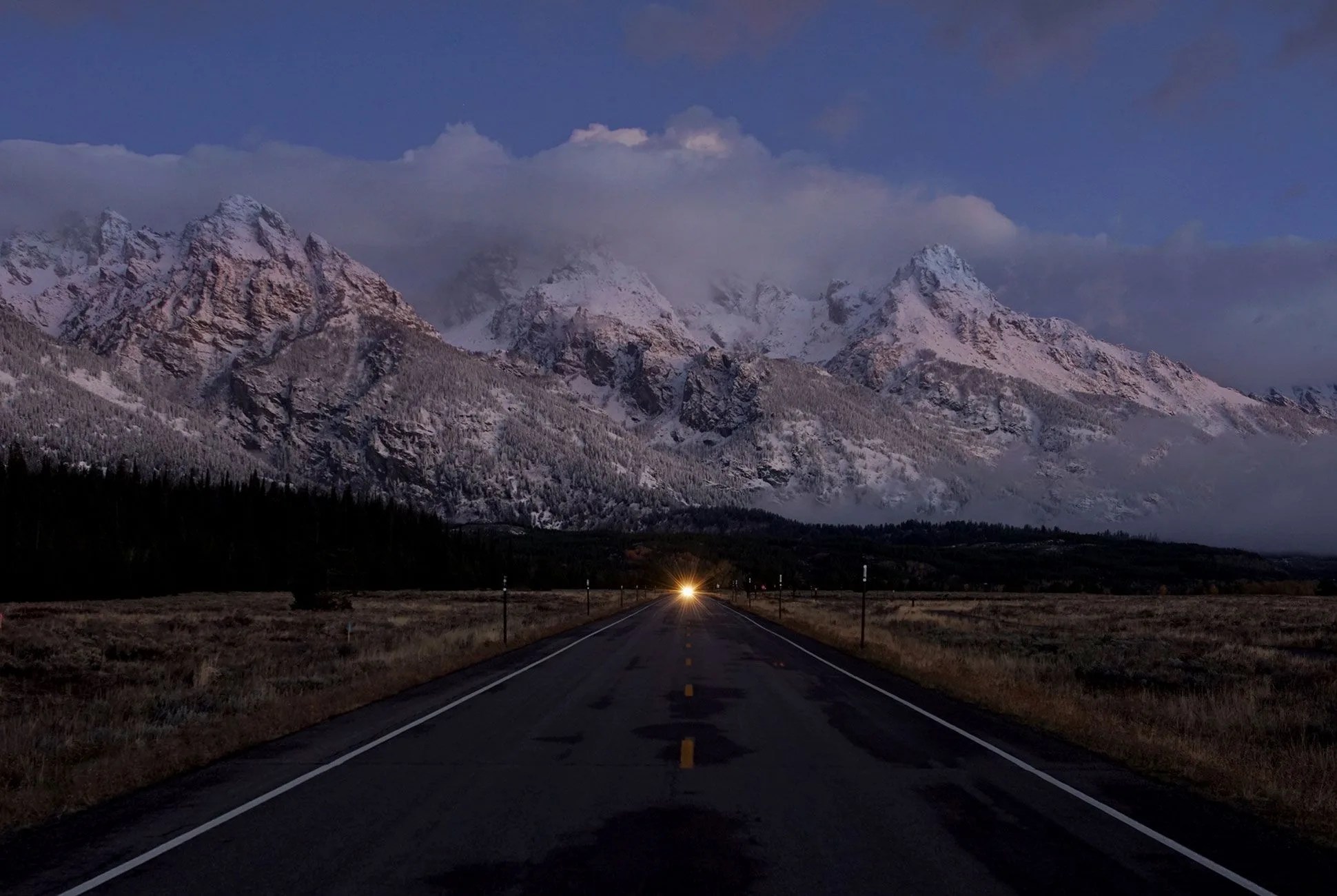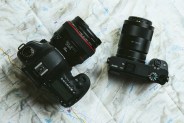One of my favorite things to do when traveling is to arrive someplace new at night, wake up early, and let the sunrise paint a whole new world before my eyes. First, you see your horizons form, then some hills or mountains, then the ghostly shapes of buildings, and then the details — windows, trees, coastlines, vehicles — all pulled from the blackness as though rendered via the slowest dial-up modem on Earth.
Sometimes the same is true with weather; it lifts, and the clouds float away to reveal spectacular surroundings. But sometimes, it doesn’t. The fog may not lift after you’ve journeyed to someplace special; the rain may not actually stop pouring from the sky. That’s how my two most recent adventures transpired: an 18-mile hike through Utah’s Bryce Canyon with guides from REI Adventures, and a visit to Wyoming’s Grand Teton National Park. In each case, I searched out epic golden-hour vistas online to prepare for my visit, hoping for world-class photos opps. Instead, I met thick, gloomy clouds. I admired the crazy hoodoos in Bryce on Instagram and instead found walls of mud. The jagged sawtooth mountains of Teton I hoped to view firsthand presented as low clouds truncating the peaks barely 200 feet from their bases.
I humped my 35-pound pack through the canyon, mud clinging to my boots, and my camera stayed packed tight in a dry-bag the entire time.
Bryce was uniquely excruciating. I humped my 35-pound pack through the canyon, mud clinging to my boots, and my camera stayed packed tight in a dry-bag the entire time. I could see what was right around me — hints of sandstone cliffs, ghostly evergreens emerging from the gray muck — but that only made me feel I was trapped in a diorama at the National Museum of Natural History, with faux boulders and trees in arm’s reach and giant, bland matte paintings standing in for the landscape beyond.
I’d love to be able to deliver a clever coda to my two-day slog through the miserably wet canyon — “a bad day in Bryce Canyon is still better than a good day at the office” — but I’m not that guy. I don’t commune with nature by rolling around in the slop and finding enlightenment no matter the circumstances. I need better weather for that. But nor am I some cranky curmudgeon. I love the outdoors, have spent countless hours exploring it, including a five-day descent through the Grand Canyon and a nine-day climb up Kilimanjaro (both equally hit-and-miss, weather-wise), and would travel to the ends of the earth if I thought for one second I’d see something amazing and perhaps snag a great image of it. I just don’t like doing it when there’s little hope of reward, wearing the psychological equivalent of a complete blindfold, with cement blocks anchored to my feet.
I would travel to the ends of the earth if I thought for one second I’d see something amazing and perhaps snag a great image of it.
But that is part of the game. You could indeed travel 12,000 miles to surf and be met with seas as calm as koi pond. You could travel to the Arctic Circle to see the aurora borealis and come away with aurora bupkus. And therein lies the consolation — and the motivation. The more you travel, the more your inventory of successes and failures stacks up into something approaching a great overarching narrative.
